How to cultivate Zamia in temperate climates
By Simon Lavaud
Download the PDF version by clicking on the image above
Zamia species are almost all of tropical origin but they can be sorted in different groups according to their cultivation difficulty.
The species can be classified according to their geographic and climatic origin which give good data about how they can be grown. There are differences between the species of the same group and some are more tolerant but the idea is to have a simple classification with growing conditions that will generally satisfy all the species of the said group.
For the vast majority of the species of this genus, it should be noted that an optimal growth will be achieved under tropical conditions. In this article, I suggest growing conditions that the plants can tolerate while still having an acceptable growth rate. Which is different from the absolute resistance of these plants that can remain alive but stunted for decades in suboptimal conditions. The aim of this article is to give keys to having healthy plants and will not get into the most extreme conditions they can survive to.
1) Florida and Caribbean Zamia. Difficulty level : Easy
One of the most widely known species is Zamia integrifolia, from Florida and it’s cultivated in large quantities for the landscaping market. Some notable species are Zamia angustifolia from Bahamas, with very narrow leaflets and Zamia pygmaea from Cuba, one of the smallest species in the genus. There is a great variety of naturally occurring ecotypes that are still not clearly defined and while there are only 8 officially accepted species, there are dozens of notable forms such as Zamia sp. « Jamaican Giant » or Zamia « angustissima » from Cuba.
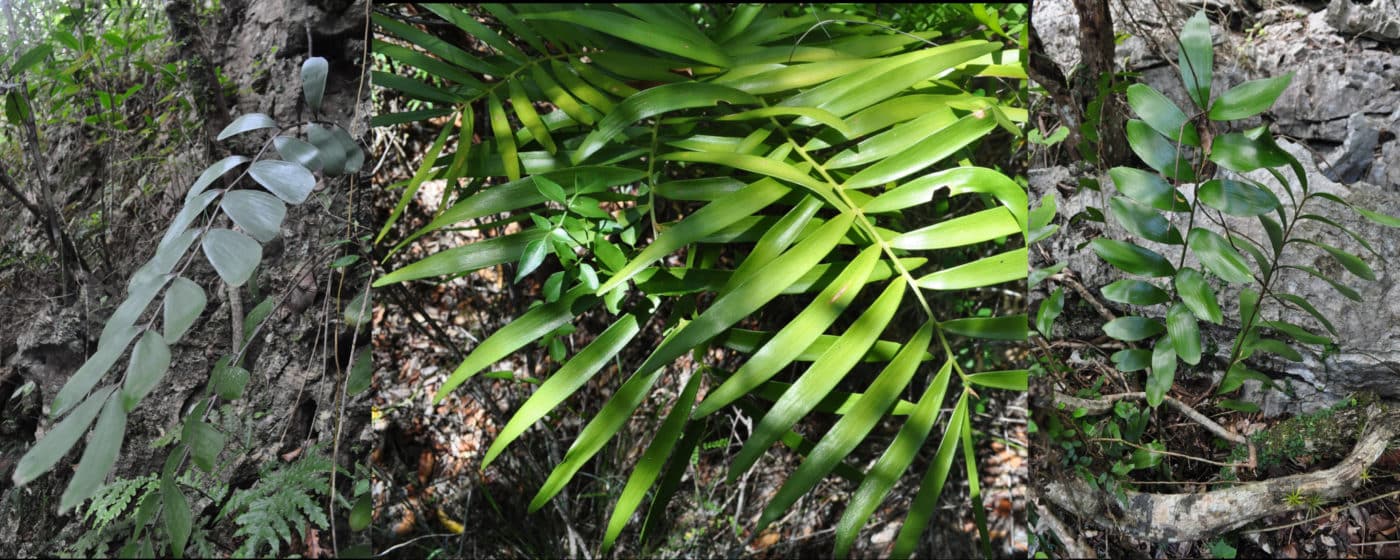
List of the officially accepted species of the Caribbean clade :
Zamia angustifolia
Zamia erosa
Zamia integrifolia
Zamia lucayana
Zamia portoricensis
Zamia pumila
Zamia pygmaea
Zamia stricta
These species are considered very easy to grow as they all tolerate temperatures close to 0°C, even negative for integrifolia (leaf damage can occur at -5°C but the plants can survive much lower temperatures being defoliated and growing back in spring). They tolerate Mediterranean winters fairly well and mostly come from calcareous derived soils that are very frequent in Southern Europe.
They also tolerate dry conditions as their habitat experience extended periods of drought.
Their cultivation can be summed up as follows :
Soil : Well draining, slightly calcareous to very calcareous (the presence of a minimum of lime seems to be essential for these species and they don’t seem to tolerate acidic conditions very well)
Water: Any type of water
Winter temperatures : 1-10°C tolerated with high 15-20°C during the day, but fairly high tolerance to long episodes of cool temperatures (temperature always under 20°C) as long as the substrate is kept fairly dry but not bone dry.
Summer temperatures : 15-20°C at night and 25-30°C during the day, tolerance up to 40°C with abundant watering to keep a decent growth rate.
| Disclaimer: It’s absolutely essential to have “summer” type temperatures for at least 4-6 months of the year! If plants are kept in cool temperatures year round they will struggle and die, it should be remembered that they’re almost all species of tropical origin. |
| On the importance of draining growing media : It’s important to use a well draining mineral medium for several reasons, it allows proper breathing of the roots but above all, it does not retain water for too long which is an advantage during the cooler months. It’s much easier to water frequently rather than drying a plant that has been over-watered. Common garden center mixes have very high organic matter content and in winter they can take weeks if not months to dry out which can be fatal to the plants. This is why I suggest a 80 % mineral growing medium. The disadvantage is that it requires frequent watering in summer but it can be life saving for the cycads in winter. You can learn more about soil in the article of the Horticulture section of the website. |
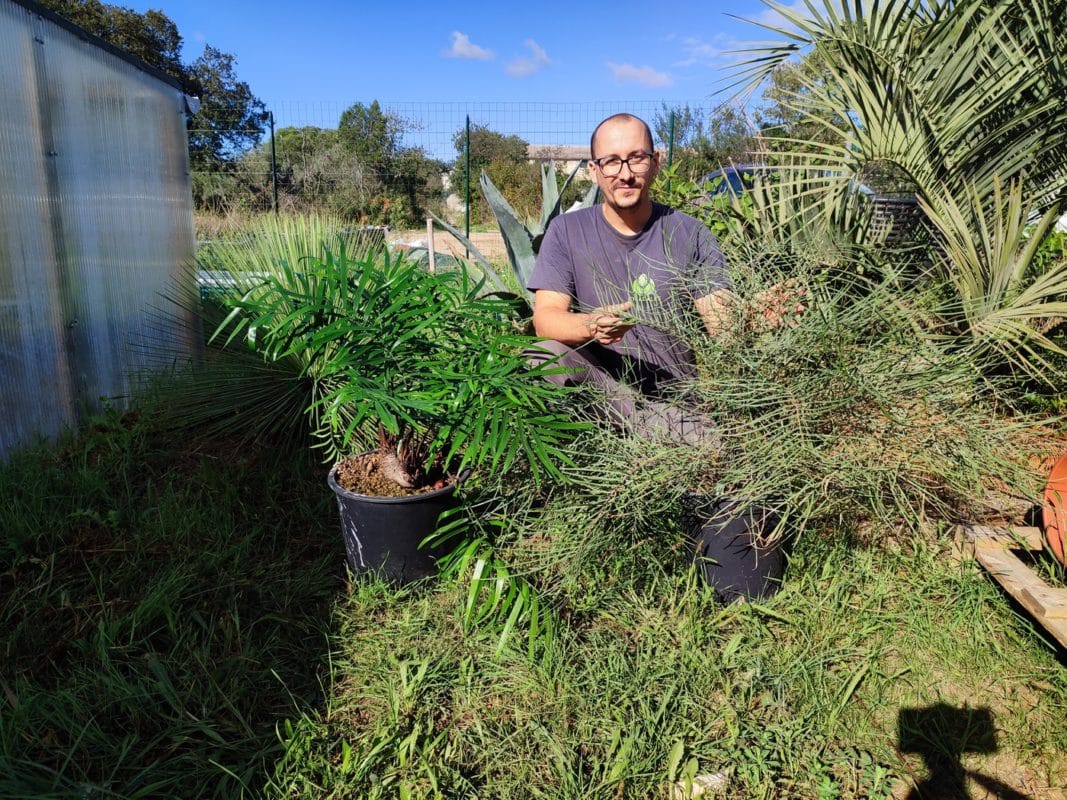
2) The Zamia from Mexico, Guatemala, El Salvador and Honduras. Difficulty level : intermediate
In general, species coming from these countries are easy to cultivate as most come from climates with a fairly marked dry season allowing them to tolerate dry air and dry soil in winter. In general they don’t seem to care about the growing medium as long as it’s well drained, nor about the water quality, though they seem to favor slightly calcareous conditions.
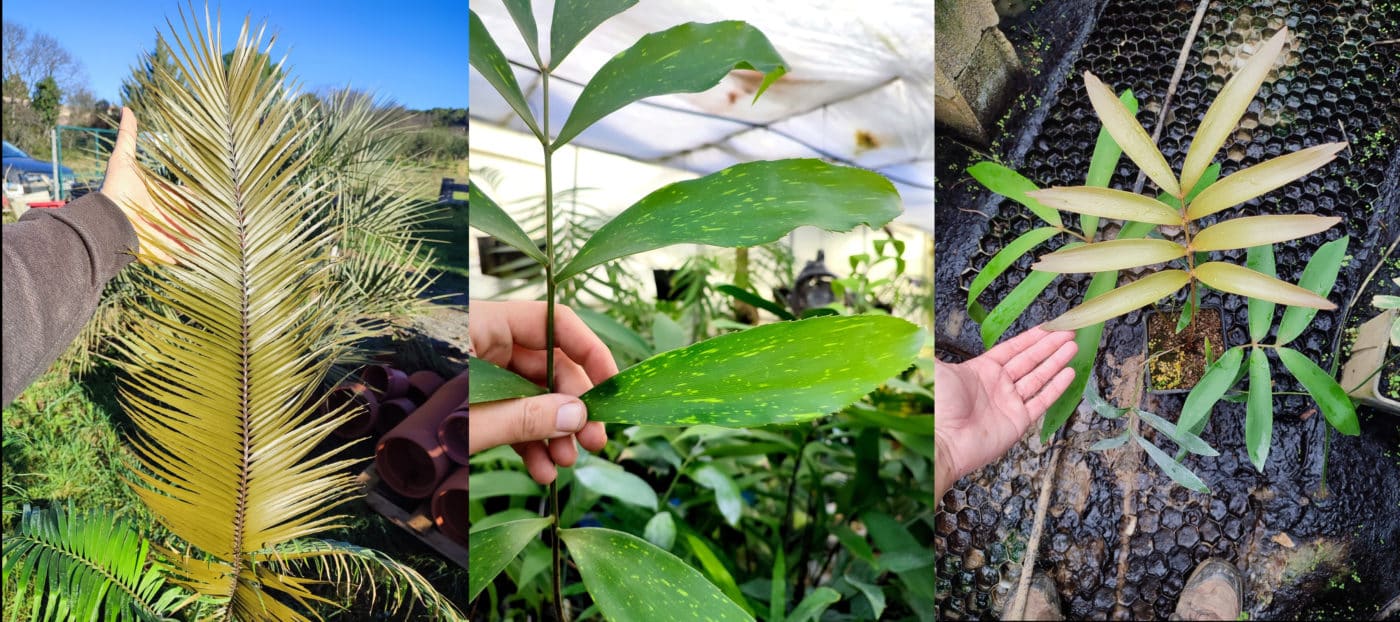
Here is the list of species from these countries with similar requirements, and some of the exceptions :
Zamia cremnophila
Zamia fischeri
Zamia furfuracea
Zamia grijalvensis
Zamia herrerae
Zamia inermis
Zamia katzeriana
Zamia lacandona
Zamia loddigesii
Zamia meermanii
Zamia oreillyi
Zamia paucijuga
Zamia prasina
Zamia purpurea
Zamia sandovalii
Zamia soconuscensis
Zamia spartea
Zamia splendens
Zamia standleyi
Zamia stenophyllidia
Zamia variegata
Zamia vazquezii
These are the exceptions that will fit more into the Category 4) species (Lowland forests of South and Central America) :
Zamia decumbens
Zamia monticola
Zamia onan-reyesii
Zamia tuerckheimii
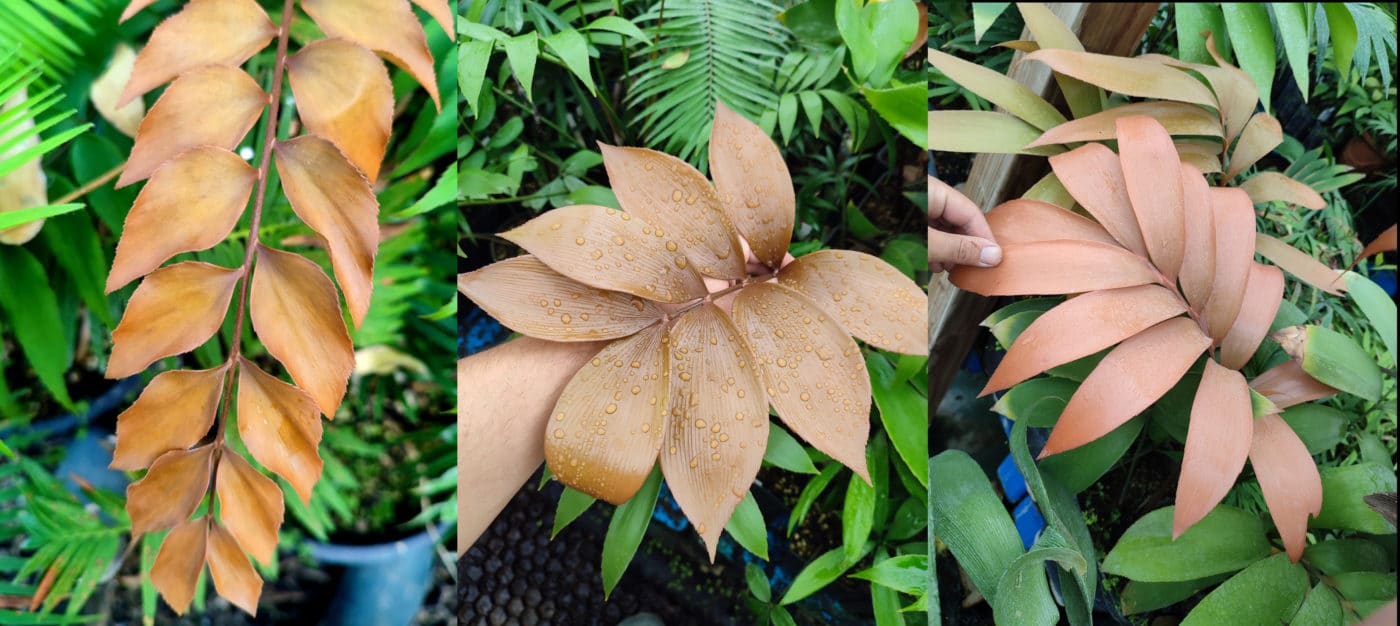
Soil: draining, alkaline or neutral
Water : All types of waters
Winter temperatures 5-10°C tolerated with higher temperatures during the day, around 20-25°C. Average tolerance to prolonged cool episodes (without going above 20°C) with dry but not bone dry soil.
Summer temperatures : 15-20°C at night and 25-30°C during the day, tolerance up to 40°C with abundant watering to keep a decent growth rate.
| Disclaimer: It’s absolutely essential to have “summer” type temperatures for at least 4-6 months of the year! If plants are kept in cool temperatures year round they will struggle and die, it should be remembered that they’re almost all species of tropical origin. |
| About watering and root rot : I mentioned that this group and the Caribbean group tolerate dry conditions and this gives them an advantage regarding rot in winter. Wet soil is well known to favor fungal attacks when it’s cold, which is probably explained by the low activity metabolism of the plant that prevents it from defending itself against pathogens. One solution is to lower the soil moisture so that it does not become the ideal environment for fungi to thrive. This solution works for species coming from seasonally dry area but not so much for species from the wet tropics (Categories 4) and 5)) |
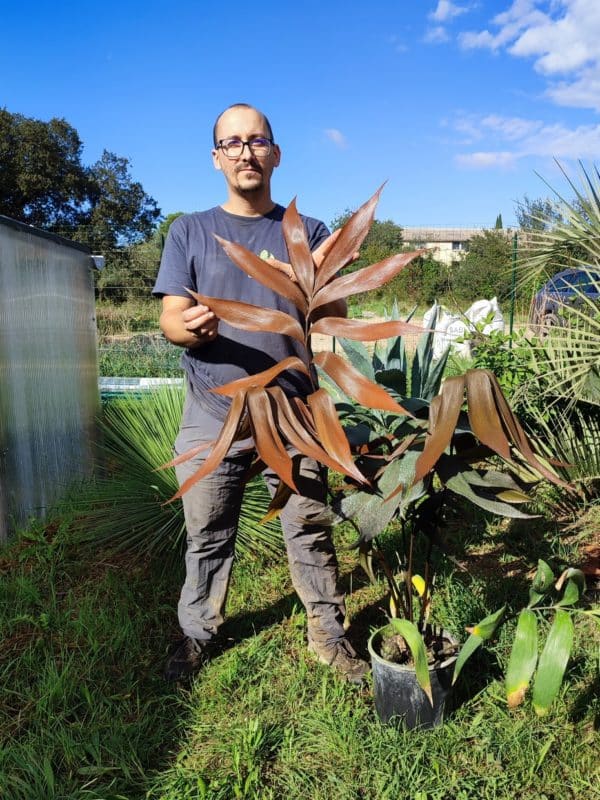
3) Zamia from seasonally dry ecosystems of South America (Colombia, Ecuador, Peru). Difficulty level: Intermediate
Species from this group are usually found at low or mid elevation, they come from habitats with a marked dry season which gives them a fairly high tolerance to cultivation in a temperate climate. These species could be grouped with the Mexican group in terms of cultivation but I am mentioning them separately due to their geographic origin.
These species are :
Zamia encephalartoides
Zamia lindenii
Zamia huilensis
Zamia tolimensis
They pose no problem in a frost free greenhouse in South France as they can be kept dry to avoid the risks of rotting.
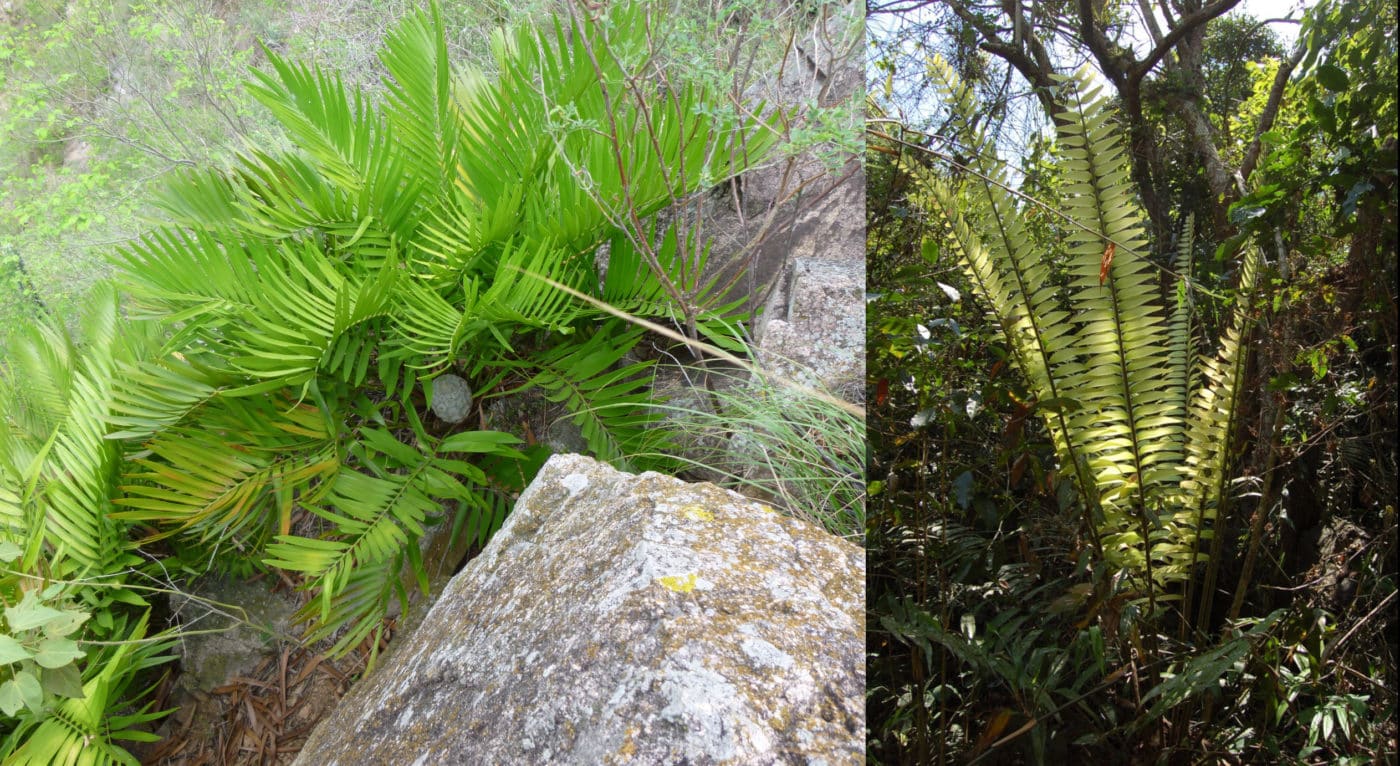
4) The Zamia from Central America (Costa Rica and Panama) and South American lowlands (Colombia, Venezuela, Ecuador, Brasil, Peru, Bolivia). Difficulty level: Difficult
This group includes a fairly high number of species that primarily come from lowland rain-forests where temperatures are fairly stable throughout the year and rainfall is high. This group being one of the most difficult to cultivate out of the tropics, I will detail the reasons for their specific requirements a bit more.
One of the main challenges to grow these species is because they suffer from a general lack of heat, even in the middle of summer in the northern half of Europe (from the middle of France and upwards)
If we look at climatic data of some of these species, such as Zamia imperialis, we can see that one of the known location where it grows, the temperature is comprised between 22 and 30°C year round. These minimum temperatures correspond to the nocturnal ones (22°C) and the maximum of 30°C is reached during the day, something that is important to keep in mind to understand their cultivation. Hygrometry is high and always between 85 and 95 % and it rains 20 days per month with an annual total rainfall of 4000mm. For comparison here is the annual rainfall of several important European cities : London, 615mm, Barcelona, 620mm and Roma, 480mm.
Having a look at climatic data of a Colombian lowland species such as Zamia melanorrhachis we can see that temperatures are fairly stable throughout the year with night minimums around 24°C and diurnal maximum around 30°C, and abundant rainfall with about 4600mm annually. Air moisture between 75 and 87 %.
Same observation for an Amazonian climate such as the ones found around Iquitos in Peru, where several species of Zamia, including Zamia macrochiera, Z. hymenophyllidia and Z. ulei can be found : Minimum night temperature 23°C, maximum day temperature 30°C, annual rainfall 2900mm and hygrometry comprised between 88 and 91 %.
We can now compare these climates to the one I know best, Montpellier’s climate, since it’s where I live and grow plants. Without accounting for extreme heat events, we can see that during the warmest months of the year, July and August, the minimum night temperatures are around 19°C and the maximum day temperatures around 30°C. Which means that even during the 2 hottest months, night temperatures are a bit under the different tropical climates cited before.
Air humidity is much lower, averaging 55 % in summer and 73 % in winter.
(NB : Most of the climatic data I mentioned can be found on the web thanks to websites such as climate-data.org. I didn’t mention specific locations for the various species for obvious reasons)
What we can learn is that European climates are globally too cold and too dry for these species. Most have a certain tolerance degree, especially in regard to the dry air and hot temperatures and most will tolerate lower temperatures if the duration of the cool even is not too long with warmer temperatures during the day. But in this case conditions will be suboptimal causing a slow growth, weak plants and risks of root rot.
If we want to grow these species correctly, we will need to give them a bit of help and I suggest cultivating in a greenhouse, veranda, well lit and warm indoors or even indoor cultivation chamber.
The list of species of this group is long and it’s obvious that there are variations within the group, with Zamia neurophylidia that seems to tolerate a wide thermal range compared to Zamia imperialis that doesn’t cope with them very well, while these two species are very close both geographically and genetically.
In general, these species are usually found in neutral to acidic soils, with some exceptions.
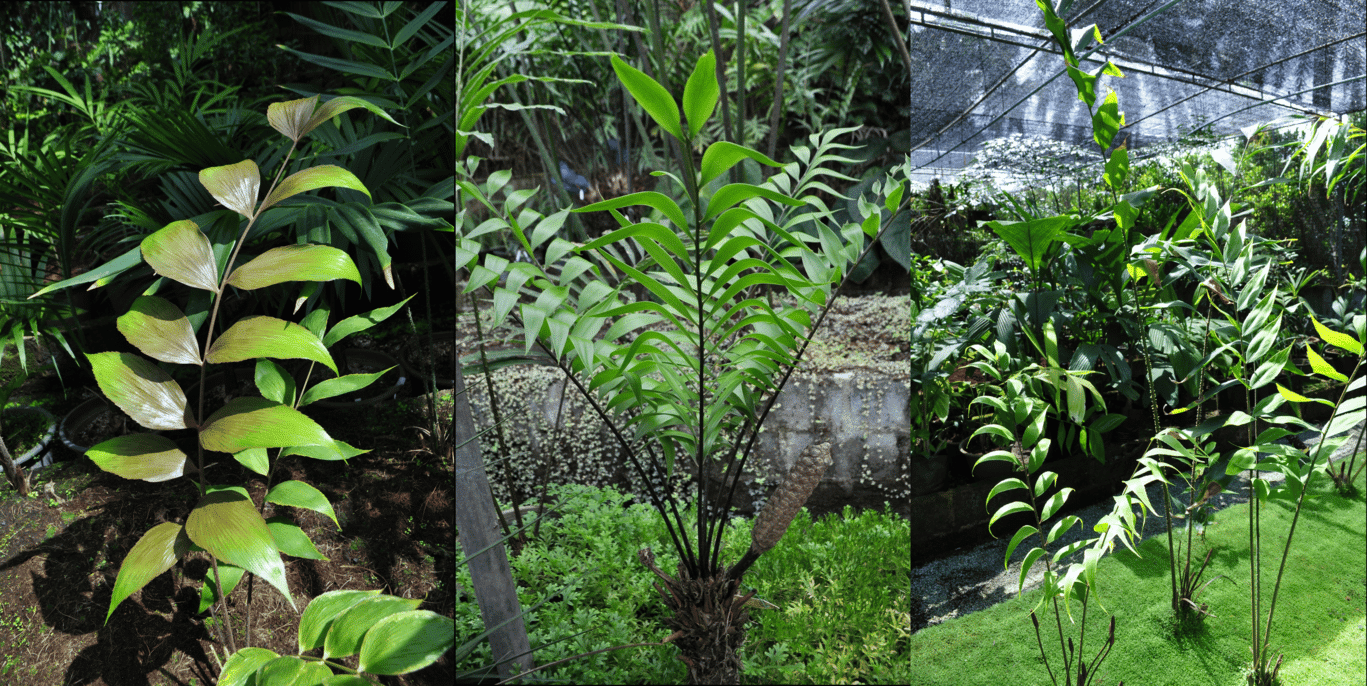
Some of the Colombian lowland Zamia have the reputation of being tricky to grow, here are shown, from left to right: Zamia disodon, Z. hymenophyllidia and Z. restrepoi.
Species list :
Zamia acuminata
Zamia amazonum
Zamia amplifolia
Zamia boliviana
Zamia brasiliensis
Zamia chigua
Zamia cunaria
Zamia decumbens
Zamia disodon
Zamia dressleri
Zamia elegantissima
Zamia fairchildiana
Zamia gentryi
Zamia gomeziana
Zamia hamannii
Zamia hymenophyllidia
Zamia imbricata
Zamia imperialis
Zamia incognita
Zamia ipetiensis
Zamia lecointei
Zamia lindosensis
Zamia macrochiera
Zamia manicata
Zamia melanorrhachis
Zamia monticola
Zamia muricata
Zamia nana
Zamia nesophila
Zamia neurophyllidia
Zamia obliqua
Zamia onan-reyesii
Zamia paucifoliolata
Zamia poeppigiana
Zamia pseudomonticola
Zamia pseudoparasitica
Zamia pyrophylla
Zamia restrepoi
Zamia roezlii
Zamia sinuensis
Zamia skinneri
Zamia stevensonii
Zamia tuerckheimii
Zamia ulei
Zamia urep

Soil : draining, neutral to acidic
Eau : neutral to acidic
Night temperatures: 19-22°C, these plants can tolerate brief episodes of 15°C
Day temperature : 25-32°C , most species tolerate up to 34-35°C but there might be some damage on the new leaves of the most sensitive species during heat peaks, especially on Zamia stevensonii that is quite sensitive to it. A low humidity lowers the heat tolerance of most species.
High air humidity, between 70 and 90 %. Most species tolerate a lower humidity, but we’re speaking here of optimal growth.
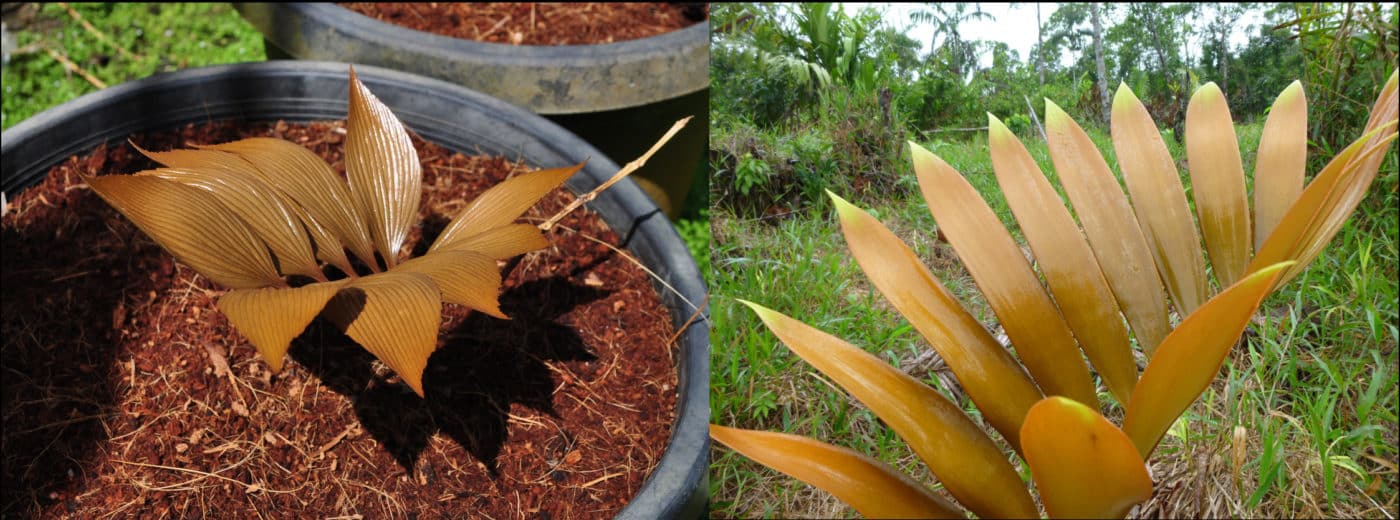
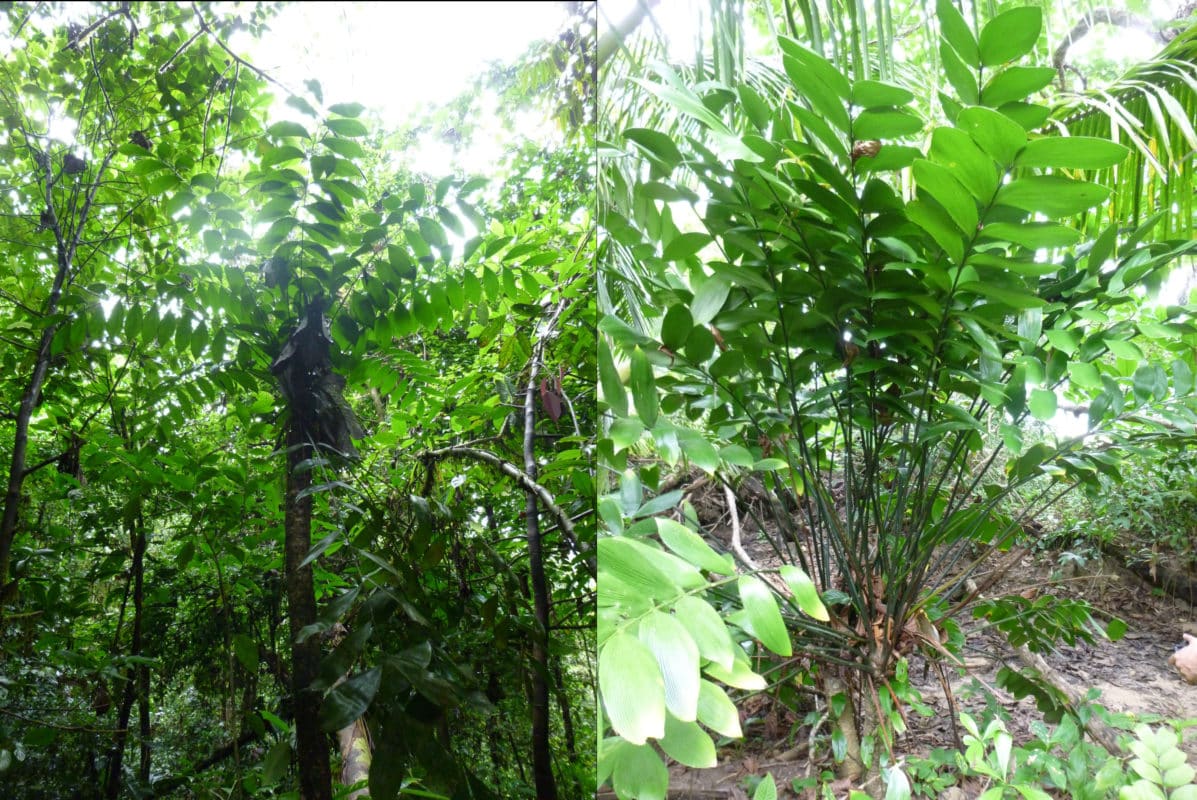
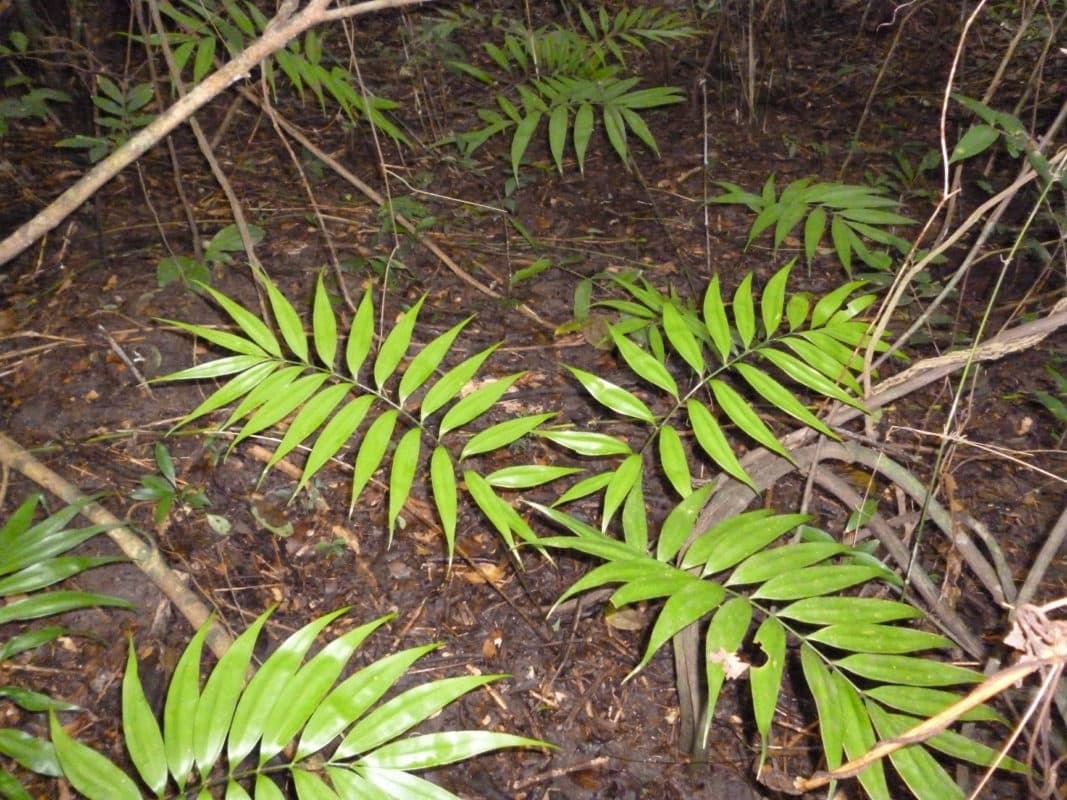
5) Cloud forest Zamia (Panama, Colombia). Difficulty level: Very difficult
These species are extremely rare in cultivation and in habitat and they should be reserved to experienced growers. They’re found at fairly high altitude in cool and humid forests. Since they’re very rare, there is little data about their cultivation but a good start seems to be the use of neutral to acidic soil, neutral to acidic water and temperature comprised between 20 and 30°C while avoiding all extremes, whether too cool or too hot.
List of cloud forest species :
Zamia lindleyi
Zamia montana
Zamia oligodonta
Zamia wallisii
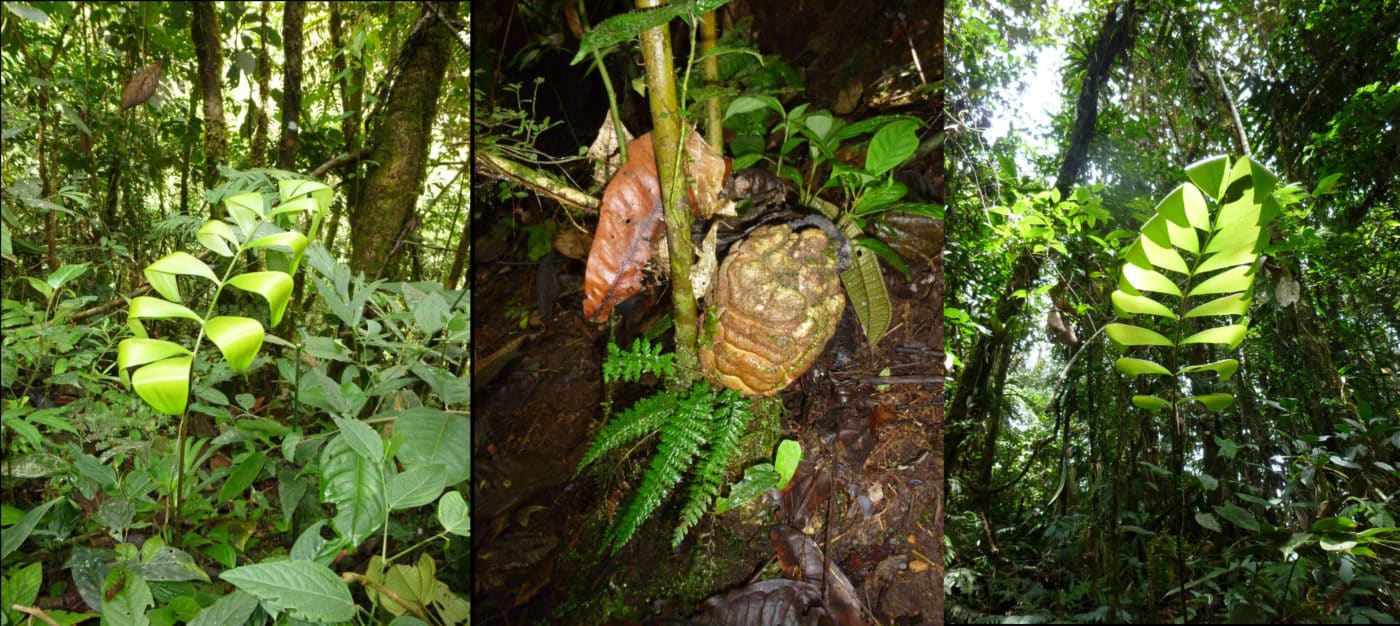
| I hope you will find this short article useful and that it gives the necessary keys to grow this wonderful genus successfully. I am aware that there are always exceptions with plants thriving in less than ideal environments but this article aims to have a general approach on growing healthy and thriving plants, meaning plants are doing more than surviving. Simon Lavaud, 2nd of January 2023 lavaud.simon@gmail.com – Cycadales.eu Feel free to share this article whether by giving this PDF or the link to my website. |




